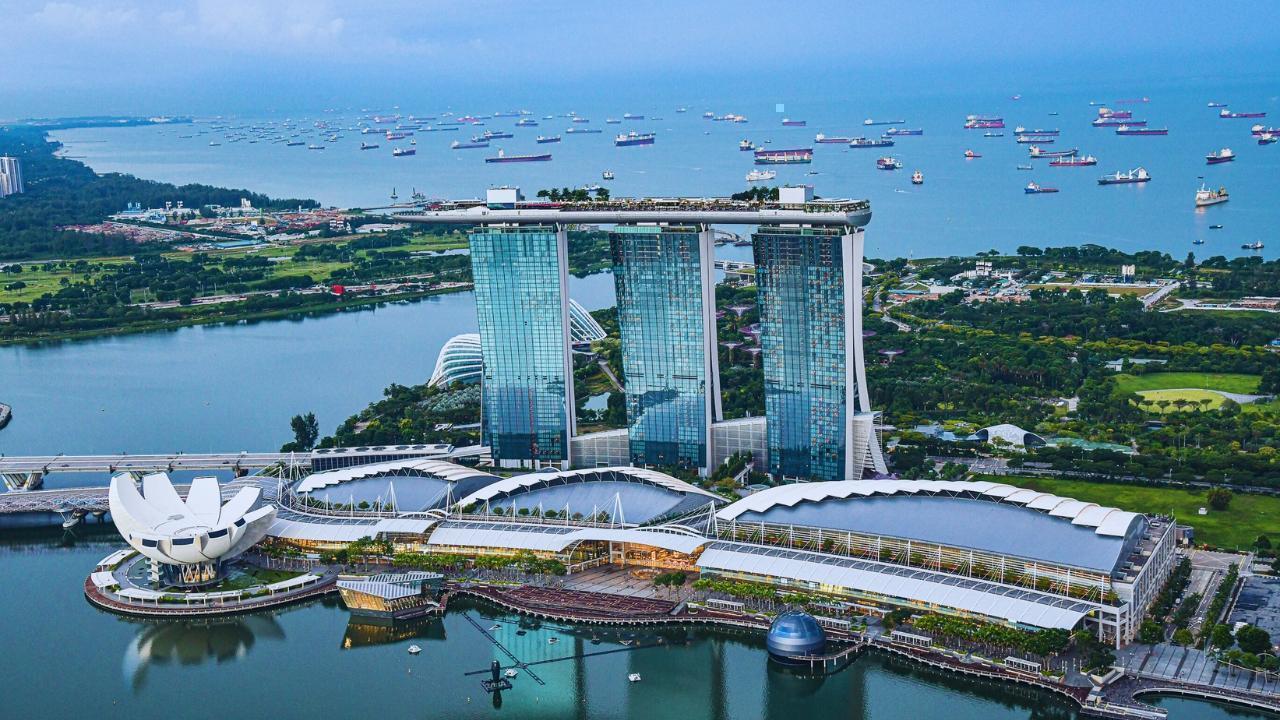You have not yet added any article to your bookmarks!

Join 10k+ people to get notified about new posts, news and tips.
Do not worry we don't spam!

Post by : Anis Farhan
Singapore has always punched above its weight in aviation, but with the Changi East mega-project, the island nation is now setting a new global benchmark. Slated to be fully operational by 2030 and partially launched in phases before that, Changi East isn’t just a terminal expansion — it’s a vision for an integrated “aerotropolis”: a futuristic ecosystem blending air travel, logistics, commerce, and innovation into one cohesive engine.
In an era where airports are becoming regional economic anchors rather than just transit hubs, Singapore’s bold bet on Changi East is both a strategic necessity and a powerful message: the city-state plans to remain the beating heart of global connectivity in Asia’s post-pandemic world.
The Changi East project spans more than 1,080 hectares, east of the current airport footprint. Its centerpiece is Terminal 5, a world-class facility designed to handle up to 50 million passengers annually — nearly equal to the entire throughput of Changi Airport in 2023.
But Terminal 5 is just one part of the story. The project also includes:
A third runway, already operational for military use, to be integrated into commercial traffic
Underground tunnels for baggage and logistics movement
A cutting-edge airport operations center, leveraging AI and digital twins for real-time decision-making
The Changi East Industrial Zone, dedicated to aerospace, air cargo, and MRO (maintenance, repair, overhaul) industries
Together, these elements form the backbone of an airport city that goes beyond passenger flow to anchor national economic strategy.
The COVID-19 pandemic decimated global air travel, and many countries are still cautious about new aviation investments. So why is Singapore pushing ahead?
Simply put, Singapore sees aviation not just as a sector, but as a national utility. The government believes that Southeast Asia’s rising middle class, regional business flows, and cargo needs will double air travel demand by 2040.
Rather than wait for bottlenecks to appear, the city-state is building capacity now, using the pandemic’s lull in air traffic as an opportunity to construct with minimal disruption. It’s a long-term bet that Changi Airport will continue to be Asia’s most efficient and well-connected hub.
One of the most innovative aspects of Changi East is its seamless integration with Singapore’s sea, land, and air freight corridors. Terminal 5 will connect directly to logistics parks and warehouses, streamlining the movement of high-value and time-sensitive goods.
This includes pharmaceuticals, semiconductors, fresh produce, and — notably — AI infrastructure equipment, which requires both speed and security.
Singapore’s goal is to strengthen its position as Asia’s logistics nerve center, especially as global supply chains diversify away from China and seek agile, neutral hubs.
Changi East is also a showcase for future-ready infrastructure. The entire airport precinct is being wired for:
Automated baggage and cargo handling
AI-driven weather and traffic forecasting
Real-time security management using computer vision
Modular architecture for quick capacity upgrades
Environmental sustainability is another pillar. The development includes solar panel installations, rainwater harvesting systems, and energy-efficient HVAC systems to align with Singapore’s net-zero goals.
This makes Changi East not just a marvel of engineering, but a template for climate-conscious, tech-integrated infrastructure.
According to Singapore’s Ministry of Transport, Changi East is expected to contribute up to 5% of the nation’s GDP once fully operational. It will create tens of thousands of jobs in aviation, logistics, construction, and services.
The project is also aligned with Singapore’s “Hub and Spoke” economic strategy, where the airport acts as a magnet for businesses in tourism, fintech, digital trade, and advanced manufacturing.
Regional airlines, MNCs, and tech firms are already expressing interest in co-locating their APAC operations near the Changi East zone, creating a self-reinforcing loop of connectivity and commerce.
No project of this scale is without risks. Rising construction costs, labor shortages, and geopolitical uncertainty could affect timelines. Additionally, regional competition from hubs like Bangkok’s Suvarnabhumi, Kuala Lumpur International, and Jakarta’s Soekarno-Hatta means Singapore can’t afford to rest on its laurels.
But Changi has consistently ranked among the top airports globally for efficiency, experience, and innovation. With Changi East, Singapore is not trying to compete — it’s trying to reshape the category itself.
This article is intended for editorial and informational purposes only. It does not constitute financial, travel, or investment advice. Readers are encouraged to verify facts independently and consult relevant authorities before making strategic decisions related to infrastructure or transport policy.










Gold Prices Slide as Strong Dollar and Futures Selling Weigh
Gold prices dipped as investors adjusted positions ahead of a commodity index reshuffle, while a str

Yash’s Toxic to Clash with Ranveer’s Dhurandhar 2 on March 19 Release
Yash’s Toxic and Ranveer Singh’s Dhurandhar 2 will battle at the box office on March 19, promising a

Australia Wins Final Ashes Test, Clinches Series 4-1; Khawaja Retires
Australia won the final Ashes Test by 5 wickets, sealing a 4-1 series win. Usman Khawaja retired aft

Malaysia Declares 2026 as ‘Year of Execution’ for 13MP Rollout
Malaysia’s Economy Minister says 2026 will focus on execution, ensuring 13MP policies turn into real

Trump Unveils New Tariffs on Iraq, Brazil and the Philippines
Donald Trump issues new tariff letters to eight countries, imposing duties up to 50 percent, citing

Heavy Clashes in Aleppo Between Syrian Forces and Kurdish Fighters
Fighting erupted in Aleppo for a second day, displacing thousands and leaving at least four dead as